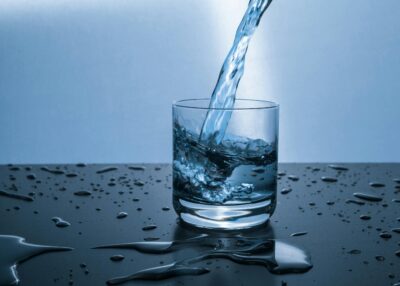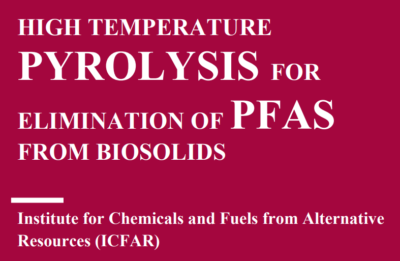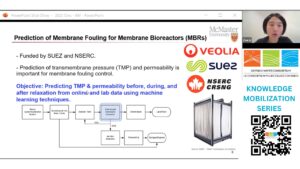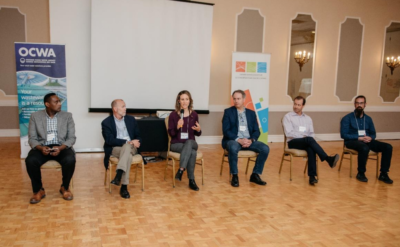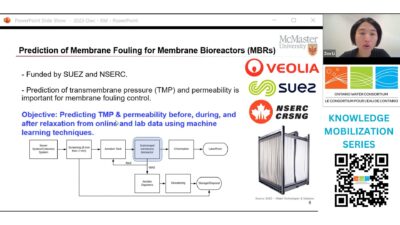Advancements in Addressing PFAS in Canadian Water Systems
OWC hosted a webinar to explore ongoing research in detecting and treating per- and polyfluoroalkyl substances (PFAS) in Canadian water systems. Researchers and students presented significant advancements and future directions.
Machine Learning for Flood and Drought Forecasting
Dr. Andre Erler from Aquanty presents valuable knowledge about innovative approaches to tackle Canada’s costliest natural disasters.
Energy & Resource Efficient Side-stream Nutrient Removal
Zebo Long from SUEZ Water Technologies & Solutions is presenting the ZeeNAMMOX™ novel technology for nutrient removal in sidestream wastewater.
High Temperature Pyrolysis for Elimination of PFAS from Biosolids
We know that we have PFAS in our environment, but not necessarily where they are and how best to treat them. Western University’s Institute for Chemicals and Fuels for Alternative Resources (ICFAR) has demonstrated the destruction of PFAS from biosolids using its high-temperature pyrolysis (HTP) technology.
An Application of Machine Learning in Wastewater Modeling : Prediction of Membrane Fouling for Membrane Bioreactors
OWC partners McMaster University & Veolia’s collaborative study adopted the data-driven machine learning techniques to build models to predict transmembrane pressure at various stages of the MBR production cycle.
Impacts of Salt Pollution on Lakes
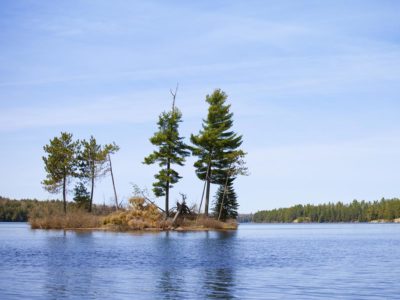 In regions like Canada, where de-icing is common, road salt use is a major driver of freshwater lake salinization. Toronto Metropolitan University science professor Stephanie Melles participated in an international research effort looking into salinization – an increase in salt concentration – that found significant damage to freshwater lake ecosystems across North America and Europe occurs at levels of salt pollution far below the ranges that government regulators have deemed safe, according to a recent announcement on the findings.
In regions like Canada, where de-icing is common, road salt use is a major driver of freshwater lake salinization. Toronto Metropolitan University science professor Stephanie Melles participated in an international research effort looking into salinization – an increase in salt concentration – that found significant damage to freshwater lake ecosystems across North America and Europe occurs at levels of salt pollution far below the ranges that government regulators have deemed safe, according to a recent announcement on the findings.
Read Article
Water Inequality: Water Insecurity in First Nations Communities
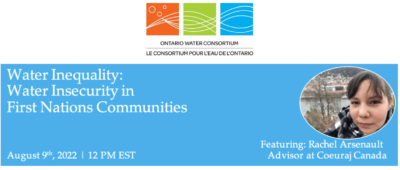 Rachel Arsenault presents the impacts of the First Nations water crisis to local communities in Canada. – Using the map of Ontario’s drinking water advisories in 2016, she illustrated and highlighted the water crisis occurred. Also, a timeline of water security impacts, reports, and legislation affecting First Nations in Ontario from 1919 to 2023 was presented.
Rachel Arsenault presents the impacts of the First Nations water crisis to local communities in Canada. – Using the map of Ontario’s drinking water advisories in 2016, she illustrated and highlighted the water crisis occurred. Also, a timeline of water security impacts, reports, and legislation affecting First Nations in Ontario from 1919 to 2023 was presented.
Watch Video
Doing more with less: the big potential of wastewater process intensification
Across the province, wastewater treatment plant operators are feeling the pressure. They need to treat larger volumes of wastewater from growing populations, meet stricter standards and cope with more intense and frequent storms.
An Application of Machine Learning in Wastewater Modeling : Prediction of Membrane Fouling for Membrane Bioreactors
Membrane bioreactors are a highly effective wastewater treatment process to produce high-quality effluent. However, one of the significant drawbacks to this technology is membrane fouling. OWC partners McMaster University & Veolia’s collaborative study adopted the data-driven machine learning techniques to build models to predict transmembrane pressure at various stages of the MBR production cycle.


